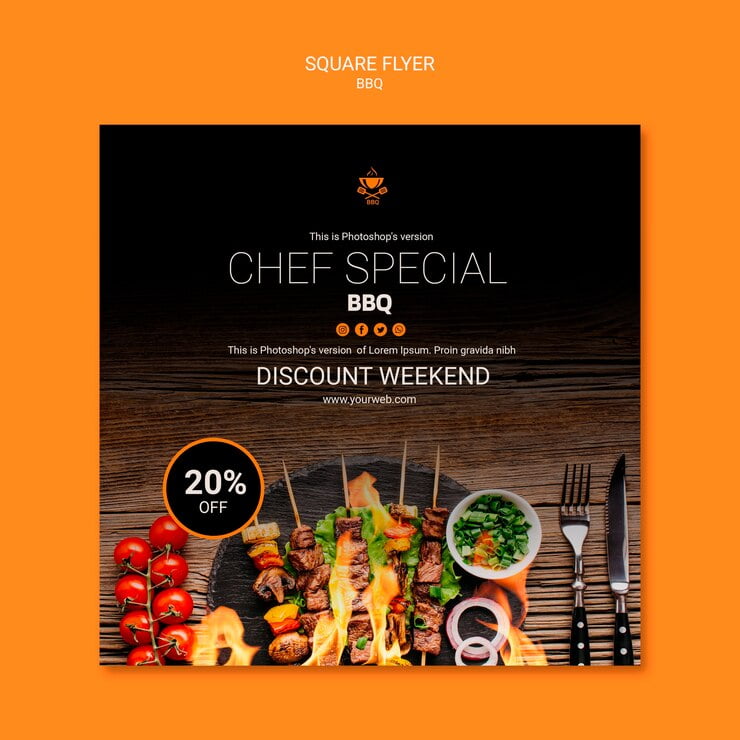Introduction:
Elevating the dining experience goes beyond just serving delicious food; it involves creating a captivating ambience and offering unique culinary delights. The restaurant specials board is one of the most effective tools for achieving this. In this guide, we’ll explore the art of crafting an enticing specials board that tantalizes taste buds and keeps customers coming back for more.
What is a Restaurant Specials Board? A restaurant specials board is a dynamic menu feature showcasing daily or weekly offerings outside the regular menu. It allows chefs to experiment with seasonal ingredients, showcase culinary creativity, and entice customers with unique dishes.
Importance of a Well-Designed Specials Board:
- Captivating Attention: A visually appealing specials board can draw customers’ attention and pique their curiosity, prompting them to explore new dishes.
- Driving Sales: Highlighting exclusive specials can encourage patrons to indulge in additional items, boosting overall revenue.
- Fostering Creativity: The specials board allows chefs to showcase their culinary skills and experiment with innovative flavours, keeping the dining experience fresh and exciting.
- Seasonal Flexibility: It enables restaurants to adapt to changing seasons and ingredient availability, ensuring fresh and relevant offerings.
- Creating a Sense of Exclusivity: Limited-time specials develop a sense of urgency and exclusivity, motivating customers to try them before they’re gone.
Components of an Effective Specials Board:
- Eye-Catching Design: A visually appealing layout with attractive fonts and graphics will instantly grab customers’ attention.
- Clear Descriptions: Concise yet descriptive dish names and ingredient lists help customers understand what’s offered.
- Pricing: Indicating each special’s price prevents surprises and helps customers make informed decisions.
- Seasonal Emphasis: Highlighting seasonal ingredients adds freshness and relevance to the specials board, aligning with current culinary trends.
- Dietary Information: Including symbols or labels for vegetarian, vegan, gluten-free, or other nutritional preferences ensures inclusivity and caters to a diverse customer base.
- Pairing Suggestions: Recommending beverage pairings or complementary sides enhances the dining experience and encourages upselling.
- Limited-Time Offerings: Specifying that specials are available for a limited time only can create a sense of urgency and drive impulse purchases.
Tips for Creating Irresistible Specials:
- Collaborate with the Chef: Work closely with the culinary team to brainstorm creative ideas and capitalize on seasonal ingredients.
- Test and refine: experiment with different dishes and gather feedback from staff and customers to refine offerings.
- Showcase Signature Items: Highlighting signature dishes or chef’s specials adds prestige to the specials board and reinforces the restaurant’s unique identity.
- Rotate Regularly: Rotate offerings frequently to keep the specials board fresh and exciting and ensure customers always have something new to try.
- Promote Strategically: Utilize various marketing channels, such as social media, email newsletters, and table tents, to promote specials and generate buzz.
- Monitor Performance: Track the sales and popularity of different specials to identify top performers and refine future offerings accordingly.
Examples of Successful Specials Board Offerings:
- Seasonal Harvest Salad: A refreshing mix of locally sourced greens, heirloom tomatoes, roasted butternut squash, and tangy balsamic vinaigrette.
- Chef’s Catch of the Day: Pan-seared Chilean sea bass served with a citrus beurre blanc sauce and grilled asparagus.
- Truffle-infused Mushroom Risotto: Creamy Arborio rice cooked with wild mushrooms and finished with white truffle oil and Parmesan cheese.
- Spiced Pumpkin Soup: This velvety smooth pumpkin soup is seasoned with warming spices like cinnamon, nutmeg, and ginger and topped with toasted pumpkin seeds.
- I braised Lamb Shank: Tender lamb shank slow-cooked in red wine and aromatic herbs, served with garlic mashed potatoes and sautéed spinach.
Conclusion:
A well-designed restaurant specials board is a powerful tool for enhancing the dining experience, driving sales, and fostering creativity in the kitchen. By following the tips and examples outlined in this guide, restaurants can create irresistible offerings that captivate customers and keep them coming back for more. Embrace the art of the specials board and elevate your restaurant to new culinary heights.



